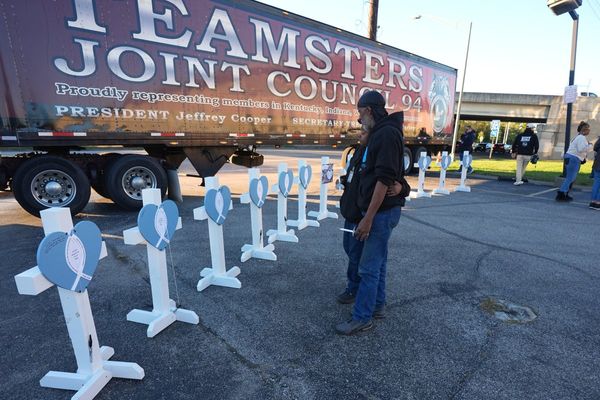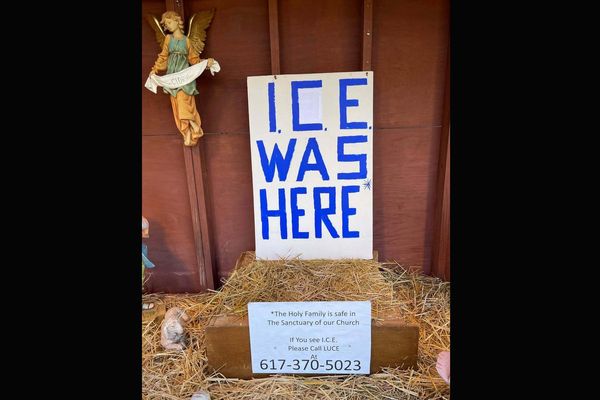
Wandering Brno’s streets is like walking through a Wes Anderson storyboard, where confectionery-coloured 19th-century facades mingle frame-by-frame with sleek modernist buildings and communist-era apartment blocks.
The Czech Republic’s second city enjoys its quiet, quirky life out of the spotlight: while Prague handles the stag parties, Brno, about a quarter of the capital’s size in population terms (1.3 million to 379,000), can quietly concentrate on the things it cares about, like music and food. The Vegetable Market, where produce stalls share space with food trucks and smart outdoor cafes, never gets overcrowded, and the almost weekly festivals remain joyous, community-spirited affairs, from August’s multi-genre Music Marathon to Uprostřed, which brings free summer performances to the streets and squares. Fringe theatre is also big here, and The Goose on a String playhouse is home to one of Brno’s many delightful hidden-courtyard cafes.
A student population of no fewer than 12 universities ensures a relaxed and youthful vibe. It’s evident every evening at Jakubské Square, the centre of Brno’s nightlife, where the customers at Výčep Na stojáka (the name means “standing bar”) drink their local craft beers on the pavement outside, then head for a burger at Forky’s, a stylish vegan restaurant with its own fast-food counter.

Looking down over the compact city centre are the beefy medieval walls of the former seat of Moravia’s ruling class. Špilberk Castle is a peculiar tourist attraction, given that its dank, windowless rooms were largely used as prison dungeons, but the recent transformation of two vast water tanks into the Temple of Stone, exhibiting centuries-old statuary and monuments, gives an atmospheric Game of Thrones tingle.
In the early 20th century it was the hill opposite that became Brno’s most fashionable address. Černá Pole’s former meadows are now covered in smart houses, and this district, north of the lovely Lužánky public park, has become a must-visit for two residences in particular: the art nouveau Villa Löw-Beer, named after its second owner, German-Jewish textile magnate Alfred Löw-Beer (who was murdered in 1939 after being detained by the Gestapo), and Villa Tugenhadt, which was built for his daughter Greta (who fled with her family to Switzerland in 1938) by modernist architect Ludwig Mies van der Rohe. Both homes were lost to the family through the German invasion in 1939, and were later used by the Gestapo. Major restoration projects at the turn of the 21st century have returned them to their original splendour and they are now important touchstones of the city’s economic and social history.

Eat and drink
Brno’s cafes and bistros are among its brightest attractions, mixing an increasingly gastronomic edge with an informal, all-are-welcome feel. Atelier, with its pop-art courtyard, and Element, with its open kitchen and NYC vibes, are two of the hottest tables in town, while new-style pubs like Lokál U Caipla still serve classic dishes such as goose chowder and goulash alongside beer drafted fresh from the tanks standing by the bar.
Lunch specials (which come with a soup starter) are a good way to sample the local cuisine – if you’re visiting Villa Tugenhadt, it’s a short walk to Era Cafe, whose functionalist interior buzzes with young people from the campus opposite. Meanwhile pho is always a good option in Brno, thanks to the Vietnamese community that has thrived here since the 1960s.

Fifteen years ago it was a lot harder to get a decent cup of coffee in the city – now it’s brimming with microroasteries, and the enduring art of Czech confectionery is getting an upgrade with avant-garde patissiers such as Sorry. Meanwhile, the Bar Which Doesn’t Exist kickstarted an original cocktail scene a few years ago, and its creators now run five very different offerings across the city, from Super Panda Circus, where the menu is navigated by way of an interactive game, to an extensive whisky bar that was voted Brno’s best when it opened last year.
Culture
In November 2021, Brno re-opened its Museum of Applied Arts (part of the Moravian Gallery) after a complete overhaul of its galleries: it now lays claim to one of the best-designed museums in the world, and entrance is free. Futuristic catwalks allow you to walk through exhibits suspended between the original 19th-century balconies, while Brno’s history of glass-, ceramic- and textile-making are reflected in collections that resemble the archives at the Ministry of Magic. There’s even a robot barista who’ll make you a selfie-ccino with your picture on it.

The music festival scene in Brno features everything from international opera to alt-pop (the latter thanks to a brand-new addition to Brno’s crowded festival calendar, Pop Messe). But it’s the small clubs, rather than the big venues, that retain its beating heart. Fléda, a former cabaret venue, has been entertaining folk for more than a century, while the smaller Kabinet Múz has transformed itself from the home of an experimental theatre company to upend the idea of what a late-night club can be. At night it hosts local alternative bands and electronica; during the day it operates a popular vegan cafe, and a record store with its own in-house label.
There are also two fantastic cinemas in town. Kino Art, a real cultural hub for the community, has been an increasingly popular hangout ever since its cafe was given a cool makeover by interior designer Martin Hrdina. Meanwhile, a trip to the Scala University Cinema is like stepping back into the 1960s, in a good way: its retro wood-panelling and imposing staircase are complemented by a busy, trendy bar.
Neighbourhood

The forest-fringed Brno reservoir, colloquially known as Prygl, stretches 10km from end to end; its southern tip, where the hydroelectric dam was built in the 1930s, is only half an hour on the tram (and even less by car) from the city centre. Well-marked hiking paths encircle the lake, and there are several sandy beaches where families come to swim, sunbathe or play volleyball. In fact, it’s popular for all kinds of recreational activities, from paddleboarding and waterskiing in the summer to skiing and ice skating in winter. Public transport boats operate all the way to Veveří Castle, which overlooks the northern part of the lake from its rocky cliff, and hosts a number of events and festivals. On the east bank sits the Maximus resort, home to one of the best spas in the country complete with an “outdoor sauna world”, and offering excellent value for its two- or three-hour visits. Beyond the dam at the southern end, the River Svratka runs back to Brno centre, passing the city’s zoo, which spans about 65 hectares on Monk’s Hill, along the way.
Where to stay

There’s a notable wave of nostalgia for the time of the First Republic, established in 1918 after the collapse of Austro-Hungarian rule, with businesses from banks to cafes invoking its spirit. In those interwar years, Brno was a major centre for functionalist architecture, much of which is now being restored after decades of neglect. In 1926 Bohuslav Fuchs designed the Hotel Avion (doubles from £66) to squeeze into an extremely narrow gap between buildings, and after a six-year renovation this eight-metre-wide building reopened to guests in March 2022 – non-residents can still visit its museum and cafe.
Emma John’s trip to Brno was provided by CzechTourism. Travel pass provided by Interrail; prices start from €185 (for four days’ travel within a month)







